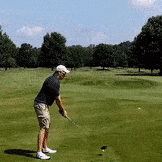Skill vs. Luck in Putting
45 members have voted
-
1. Read the question in the first post and answer here. Vote BEFORE you read any replies.
-
The gap between the good and bad putters would be narrowed.26
-
The gap between the good and bad putters would be increased.8
-
The gap between the good and bad putters would remain the same.11
-
-
Topics Being Discussed Right Now on The Sand Trap
-
"5 Minutes Daily" Practice Challenge 1 2 3 4 840
By iacas, in Instruction and Playing Tips
- 5 minutes daily
- dedication
- (and 6 more)
- 15,112 replies
- 911,166 views
-
- 30 replies
- 7,726 views
-
Snell Golf 2024 Prime Lineup Now Available
By billchao, in Balls, Carts/Bags, Apparel, Gear, Etc.
- snell
- snell golf
- (and 4 more)
- 4 replies
- 779 views
-
- 3,403 replies
- 333,542 views
-
- 21 replies
- 424 views
-









Recommended Posts
Create an account or sign in to comment
You need to be a member in order to leave a comment
Create an account
Sign up for a new account in our community. It's easy!
Register a new accountSign in
Already have an account? Sign in here.
Sign In Now